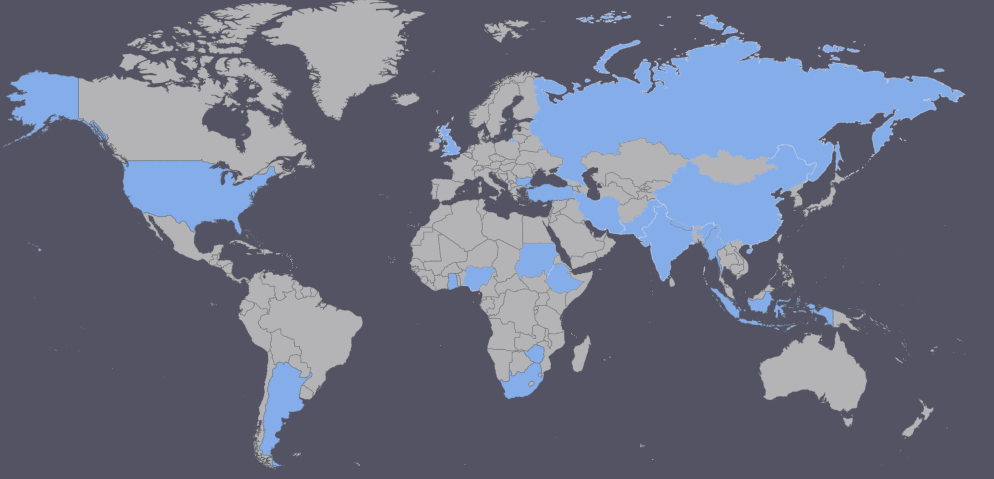An Experimental Study of the Effect of CO2 Water-Mancos Shale Interactions on Permeability
Keywords:
CO2 water, Mancos shale, Water-shale interactions, Permeability, DissolutionAbstract
When CO2 water contacts with a split shale rock, it dissolves some mineral components, making the fracture (split) opening wider and the increase in the rock flow capability (apparent permeability) higher. Meanwhile, some dissolved particles move with the flowing water, thus blocking some pore throats and decreasing the rock apparent permeability. Whether the rock apparent permeability can be increased or decreased, depending on these two competitive phenomena. The issue is critical in a carbon capture, utilization, and sequestration project; it is also very important in an enhanced oil recovery project by CO2 injection. In this study, a split Mancos Shale core was used to investigatethis issue. It was found that the apparent permeability was decreased. More research is needed to address this issue.
References
Dávila, G., Cama, J., Luquot, L., Soler, J. M., Ayora, C., 2017. Experimental and modeling study of the interaction between a crushed marl caprock and CO2-rich solutions under different pressure and temperature conditions. Chemical Geology 448,26-42.
Deng, H., Steefel, C., Molins, S., DePaolo, D., 2018. Fracture evolution in multimineral systems: The role of mineral
composition, flow rate, and fracture aperture heterogeneity. ACS Earth and Space Chemistry 2 (2), 112-124.
Deng, H., Voltolini, M., Molins, S., Steefel, C., DePaolo, D., Ajo- Franklin, J., Yang, L., 2017. Alteration and erosion of rock matrix bordering a carbonate-rich shale fracture. Environmental Science & Technology 51 (15), 8861-8868.
Fatah, A., Bennour, Z., Mahmud, H.B., Gholami, R., Hossain, M.M., 2020. A Review on the Influence of CO2/Shale Interaction on Shale Properties: Implications of CCS in Shales. Energies 13 (12), 3200.
Garing, C., Gouze, P., Kassab, M., Riva, M., Guadagnini, A., 2015. Anti-correlated porosity–permeability changes during the dissolution of carbonate rocks: experimental evidences and modeling. Transport in Porous Media 107 (2), 595-621.
Lu, J., Nicot, J.P., Mickler, P. J., Ribeiro, L.H., Darvari, R., 2016. Alteration of Bakken reservoir rock during CO2-based fracturing - An autoclave reaction experiment. Journal of Unconventional Oil and Gas Resources 14, 72-85.
Luquot, L., Gouze, P., Niemi, A., Bensabat, J., Carrera, J., 2016. CO2-rich brine percolation experiments through Heletz reservoir rock samples (Israel): Role of the flow rate and brine composition. International Journal of Greenhouse Gas Control 48, 44-58.
Noiriel, C., Madé, B., Gouze, P., 2007. Impact of coating development on the hydraulic and transport properties in
argillaceous limestone fracture. Water Resources Research 43, W09406.
Sanguinito, S., Goodman, A., Tkach, M., Kutchko, B., Culp, J., Natesakhawat, S., Fazio, J., Fukai, I., Crandall, D., 2018.
Quantifying dry supercritical CO2-induced changes of the Utica Shale. Fuel 226, 54-64.
Tutolo, B.M., Luhmann, A.J., Kong, X.Z., Saar, M.O., Seyfried, W.E., 2015. CO2 sequestration in feldspar-rich sandstone: coupled evolution of fluid chemistry, mineral reaction rates, and hydrogeochemical properties. Geochimica et Cosmochimica Acta 160, 132-154.
Downloads
Published
Issue
Section
License
Copyright (c) 2022 James Sheng

This work is licensed under a Creative Commons Attribution-NonCommercial-NoDerivatives 4.0 International License.
The authors keep the copyrights of the published materials with them, but the authors are aggee to give an exclusive license to the publisher that transfers all publishing and commercial exploitation rights to the publisher. The puslisher then shares the content published in this journal under CC BY-NC-ND license.



